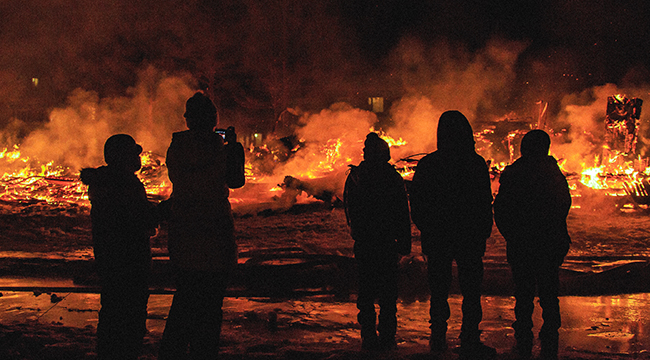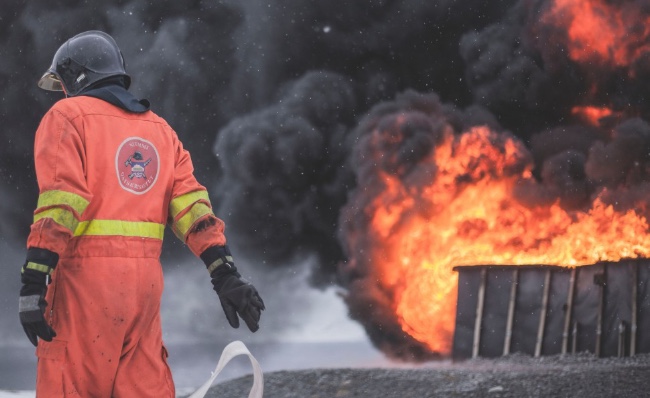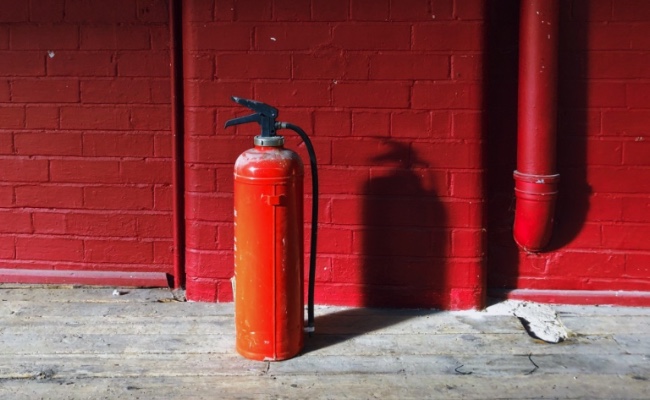
When the weather gets warmer and the land dries out under the unforgiving heat of the sun, fire season in many U.S. states goes into full swing. Or at least, that’s how it used to be. Last month, Los Angeles Magazine ran the headline, “California Is Entering an Era of Endless Wildfires.” That may sound like the tagline for a new movie starring Dwayne Johnson, but for people across the western United States, it’s a terrifying reality they’re actually facing, as fire season is getting longer, the fires are getting bigger, and their frequency is increasing.
This is only likely to get worse. Wildfires are a natural part of several climate systems, but we’re throwing the natural rhythm of burning and regrowth off, and quickly. The National Park Service says that 85 percent of wildfires are caused by humans. Humans who are not just living in fire risk zones but moving to them rapidly. The number of people living in fire risk areas in the western United States has jumped 1000 percent since the 1940s. From 1990 to 2010 — 25 million more people moved into these highly flammable areas — with 12.7 million more homes built. As humans flood into these areas, putting in power lines, roads, and structures that will burn readily, fires are getting larger and more damaging. Fifteen of the largest fires in California ever came in the last twenty years. Seven of the top ten since 2015, and six of those in the last 18 months. All those stats seem to indicate that the more humans around to start fires, the more intense the fires are getting.
Let’s say you aren’t one of those 25 million people who moved into a potential disaster zone. It can be easy to say, “well, that’s too bad, but it’s on them.”
Unfortunately, it doesn’t work that way. The problem with wildfires becoming harder to control and the season being longer in length, affects everyone. From air quality to environmental concerns to financial burdens, these fires are something we should all be concerned about. Here’s why you should care about increasing wildfire risk, no matter where you live.

A Large Scale Issue
As we said, fire is a natural part of the ecosystem in many parts of the country — with wildfire controlling overgrowth and brush and even helping certain plants seed. But currently, these fires are happening with increased frequency and intensity. Studies show that fire seasons are longer than they used to be. One such study, that looked at data from fire activity in the United States between 1979 and 2013, found that the length of the season has increased by 18.7 percent. The U.S. Forest Service says it’s become 78 days longer on average over the last 50 years. That’s nearly three additional months where fires are a serious threat.
In addition to longer burning time, the fires have gotten bigger. A fire expert at Columbia concluded that since the 1980s climate change has contributed to 10 million more acres of fires in the West. So while the number of fires starting isn’t necessarily increasing (they are a natural part of the dry season), they’re getting larger and lasting longer.
Why are the fires getting worse?
Scientists are generally hesitant to say that climate change is causing the fires. Things like human error, lightning, or lava are generally the direct cause. But what is happening is that these places are getting hotter and therefore, drier. California is three degrees warmer than it was 100 years ago – leaving areas with less moisture and more susceptible to catching fire. So while climate change isn’t necessarily directly causing fire, it’s contributing to conditions that cause make fires more likely to catch and spread.
The world getting hotter isn’t doing the western United States any favors. Niether is the increase in fuel sources created by more homes in fire areas.
Why you should care:
Well first, lives lost and people losing their homes and livelihoods is obviously devastating. 2018 was the worst fire year in recorded California history, both in acreage burned and deaths. Beyond that though, these fires have a huge financial toll that affects everyone. Last year, California also had a record in insurance claims due to fire, over 12 billion dollars. And managing these fires is costing the federal government.
The United States Forest Service is being forced to funnel more and more resources into forest fires. The government reports that in 1995, about 16 percent of the Forest Service budget went to wildfire-related costs. These days, that number is over 50 percent — with projections that in 10 years, 67 percent of the agency’s budget will go toward fires. That money has to come from somewhere. As a consequence, staff in non-fire related fields for the forest service has gone down 39 percent — and should the budget numbers continue to rise, an estimated 700 million dollars will be taken away from non-fire programs over the next decade.
Beyond the money and resources fires cost us, they also have a health reach far beyond the immediately affected communities. During the Ferguson Fire in Yosemite last year, air quality was affected over 100 miles away from the actual blaze. According to the American Lung Association, wildfire pollution has what’s called particle pollution. These tiny pollutants enter your lungs and can trigger asthma, heart attacks, and strokes. As fires grow bigger and last longer, more pollutants are going to affect the air quality in surrounding communities and states.
Another reason you should care: climate change. So — with wildfires and climate change, there’s a bit of a chicken and the egg thing going on. Climate change is leading to conditions that are worsening fires and the carbon emissions from these worsening fires are, in turn, contributing to climate change. Something that affects the entire planet. Per the National Oceanic and Atmospheric Administration, “wildfires release large amounts of carbon dioxide, black carbon, brown carbon, and ozone precursors into the atmosphere. These emissions affect radiation, clouds, and climate on regional and even global scales.” In 2018, 15 percent of all emissions in California were from wildfires according to the U.S. Interior Secretary, Ryan Zinke. The 68 million tons of heat-trapping carbon dioxide was the equivalent of providing electricity to the state for an entire year, a figure that comes from the U.S. Geological Survey who analyzed the date from the deadly fires. And the area burned in the U.S. is projected to double for every degree the planet rises. So cyclically, the more area burned, the more emissions we’ll have.

So what can we do?
Support bills, policies, and plans that work to counteract and reduce climate change. The world is on fire metaphorically as well as literally. You can call your representatives to let them know where you stand — things like pulling out of the Paris climate accord can only be stopped if it’s clear that the support for climate change prevention initiatives is overwhelming. And will cost representatives their seat if they go against it. Just last month, the house passed a bill that would prevent Trump from withdrawing from the agreement in 2020. It still has to pass the Senate though, and that does not look good as Senator Mitch McConnell announced, “This futile gesture to handcuff the U.S. economy through the ill-fated Paris deal will go nowhere here in the Senate.”
Have a senator who votes against climate change initiatives? Call them, email them, protest. Put pressure on them to pass this bill.
And support more money being allocated to fire prevention. The budget for the U.S. Forest Service is having to go more to simply containing the damage than prevention. Supporting more funding for prevention initiatives and land management will help provide the support they need to both contain and prevent wildfires from spreading.
***
Without intervention, wildfires are expected to only get worse. One study predicted that by 2039, many Western states will see a median increase in area burned as much as five times larger than it is right now. And again, right now, we’re seeing some of the most destructive fires in recorded history. No matter where you live, that’s something to be concerned about.






